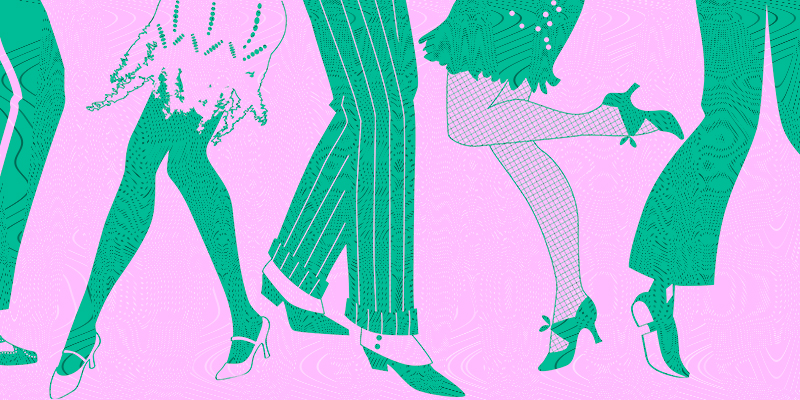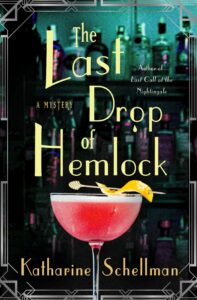The 1920s was a decade of strict social hierarchies, with huge divides between wealthy elites and poor workers, bias against immigrants, racial segregation, and laws against homosexual activity. But the free-for-all nightlife of the Jazz Age was built around embracing everything naughty, illegal, and new. This meant that at night, many of those strict hierarchies came toppling down.
Prohibition was created by the Eighteenth Amendment, and it ended the nationwide production, import, transport, and sale of alcoholic beverages… in theory. In reality, it was easier to get a drink during Prohibition than it was after. When liquor was illegal, it was unregulated, and speakeasies served their customers at all hours of the day and night. They were where young and old, rich and poor alike headed to socialize, dance, drink, and flirt. Which one you went to could depend on who you were and how much money you had.
The most upscale speakeasies were restaurants and performance halls where politicians, debutants, and movie stars went to see and be seen. Photographers and journalists would attend, chronicling the parties and scandals in newspaper columns. One of the most well-known society journalists of the Jazz Age was Lois Long, who wrote for The New Yorker under the pseudonym “Lipstick.” She would drink, dance, and party at the most fashionable places in New York City, then go straight to the office the next morning to write her columns, which thousands of readers kept up with to either plan or daydream about their own exciting nights out on the town.
But not every speakeasy was a glamorous destination for the elite. Many of them were more like the bars of today: places where the wealthy, middle, and working classes could all mingle over a drink.
Nightlife in the Jazz Age encouraged mixing across racial lines as well, though American society was otherwise strictly segregated. In major cities like New York and Chicago, some of the most popular spots were known as “Black & Tans.” These nightclubs were usually found in cities’ bohemian and Black neighborhoods, and they as were famous for their racial integration as they were for their innovative cocktails. In the Amsterdam News, a Black newspaper in Chicago, a journalist wrote that, “the night clubs have done more to improve race relations in ten years than the churches, both black and white, have done in ten decades.”
(The cocktails themselves became popular as a way to hide the taste of subquality liquor, like Chicago’s infamous “bathtub gin.”)
Jazz Age nightlife also got a boost from a thriving queer subculture in America’s major cities. In New York, Greenwich Village and Harlem were known spots for queer nightlife. Some of the biggest public events in Jazz Age New York were the Masquerade and Civic Balls hosted by the Grand United Order of Odd Fellows at Hamilton Lodge in Harlem: annual public drag balls that began in the late 1800s but reached the heights of popularity in the 1920s.
The LGBTQ community, some of them traveling in from other parts of the country to participate, didn’t hide themselves at these events. The New York Age often announced the masquerade winners by name and noted that, “Scores of males of pronounced effeminiate [sic] traits gracefully disported themselves in beautiful evening gowns. They might have been mistaken anywhere for fascinating shebas.” Female attendees also were likely to attend in drag, and more than one newspaper characterized masqueraders as belonging to “the third sex.”
The Hamilton Lodge balls, as they were often known, weren’t just a gathering spot for the queer community. They became a major part of New York’s social calendar for all classes, orientations, and races. The Odd Fellows were a Black fraternal order, but many newspaper articles written about the Lodge Balls noted that attendees of all races and classes were there “looking for a thrill.”
“Color prejudice was thrown to the winds,” noted a writer for The New York Age in 1927. Thousands of people came out for the party; in 1926, The New York Age estimated that 1,500 people attended. By 1933, that estimate had grown to 6,000, and the police and fire officials had to be present to maintain order.
For those worried about ending up on the wrong side of the law, private parties were safer than public events or speakeasies. It was legal to finish alcohol that you already owned when Prohibition went into effect, so individuals could claim that they were just sharing their own “provisions” with friends (though this excuse became less believable the longer Prohibition went on). And parents in communities around the country would often host parties and dances for their young people to keep them out of trouble—though, just like today, plenty of teenagers snuck in their own booze.
If you were in a major city during Prohibition, though, there was a good chance your nightlife put you on the wrong side of the Eighteenth Amendment. But that was one of the reasons that so many people who participated in that nightlife were willing to mingle across lines of class, community, race, and sexuality. No matter who they were or how much money they had, they all had a few things in common. They enjoyed a night out. They probably liked jazz music and dancing. And they were all willing to break the law to have a good time.
***


















